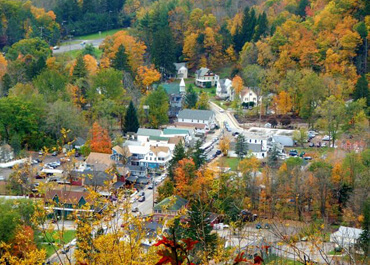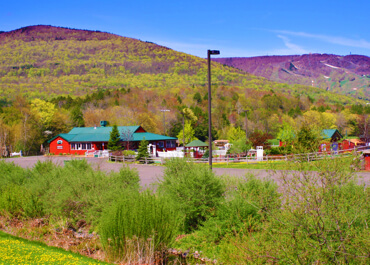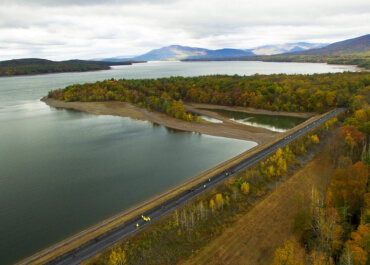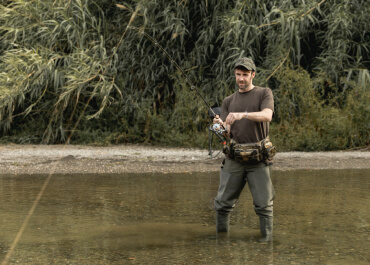

Voted as one of Top 10 Favorite Small towns to visit in America! Come See why and visit downtown Phoenicia!

Kaaterskill Falls is a two-drop waterfall. The dual cascades total 260 feet, making it one of the Eastern United States' tallest waterfalls.

Come and experience an 18 hole mini-Golf, take a swing at the driving range, roam among the scenic trails on horseback, even enjoy a round of paint ball.

10 Minutes Away! Walk the streets of this beautiful town, shop in stores, flea markets, or enjoy the drumming circle in town square!

10 Minutes Away! Spend less time planning and more time having fun! Located in the Catskill Mountains, Belleayre is surrounded by charming villages and hamlets.

10 Minutes Away! Hunter Mountain's fun continues after the snow melts with activities all spring, summer, and fall! Enjoy world-class entertainment at one of our numerous festivals and concerts

Built in 1962 and moved to the Catskills in the early 80s, the Phoenicia Diner has a long history of serving customers who are drawn to the Catskills' natural beauty.

Brios, a local Phoenicia Restaurant, has been proudly serving breakfast, lunch and dinner since 1973. Our collection of traditional homemade recipes has permitted us to provide our customers with a menu that is both eclectic and extensive. Our breakfast menu alone ranges from a traditional Italian breakfast to a variety of country skillets and classics like Eggs Benedict.

Experience the magic of the historic Ulster & Delaware Railroad as you travel alongside the Esopus Creek through the beautiful woods of the Catskill Mountains.

Woodstock Brewing was founded by two friends with a passion for beer and tinkering. Our brewery has grown from a 1/2 barrel pilot system in a Woodstock garage to a 15 barrel brewery.

No matter what we're making, it's our untouched mountain water that truly showcases the natural beauty of this place. From clean, crisp lagers to malty, rich stouts, we aim to reflect the great location in which our brewery was bornů and more importantly, give back.

Belleayre Mountain in Highmount, NY, hosts two major music festivals: the Belleayre Music Festival and the Mountain Jam Music Festival. The Belleayre Music Festival is an annual event with a long history of featuring diverse musical artists. Mountain Jam, a rock and camping festival, is returning in 2025 to Belleayre Mountain after a hiatus.

The Ashokan Rail Trail is open to the public from sunrise to sunset year-round. The 11.5-mile recreational trail runs along Ashokan Reservoir between West Hurley and Boiceville.

Oliverea Road South Parking Area (Slide Mountain Parking Area) is located on Oliverea Road, 9.4 miles south of its intersection with NYS Route 28. Provides access to the Burroughs Range Trail and the southern section of the Phoenicia East Branch Trail.

Enter into a visual and sound spectacle like no other at the World's Largest Kaleidoscope, located at The Shops at Emerson. Towering at 60 feet tall and 37.5 feet in diameter, this historic silo has been transformed into a larger-than-life kaleidoscope that captivates visitors of all ages.

Nestled in the heart of the Catskills, Phoenicia is proudly known as the Trout Fishing Capital of the Northeast. Its pristine streams, especially the renowned Esopus Creek, attract anglers from around the country year-round.

